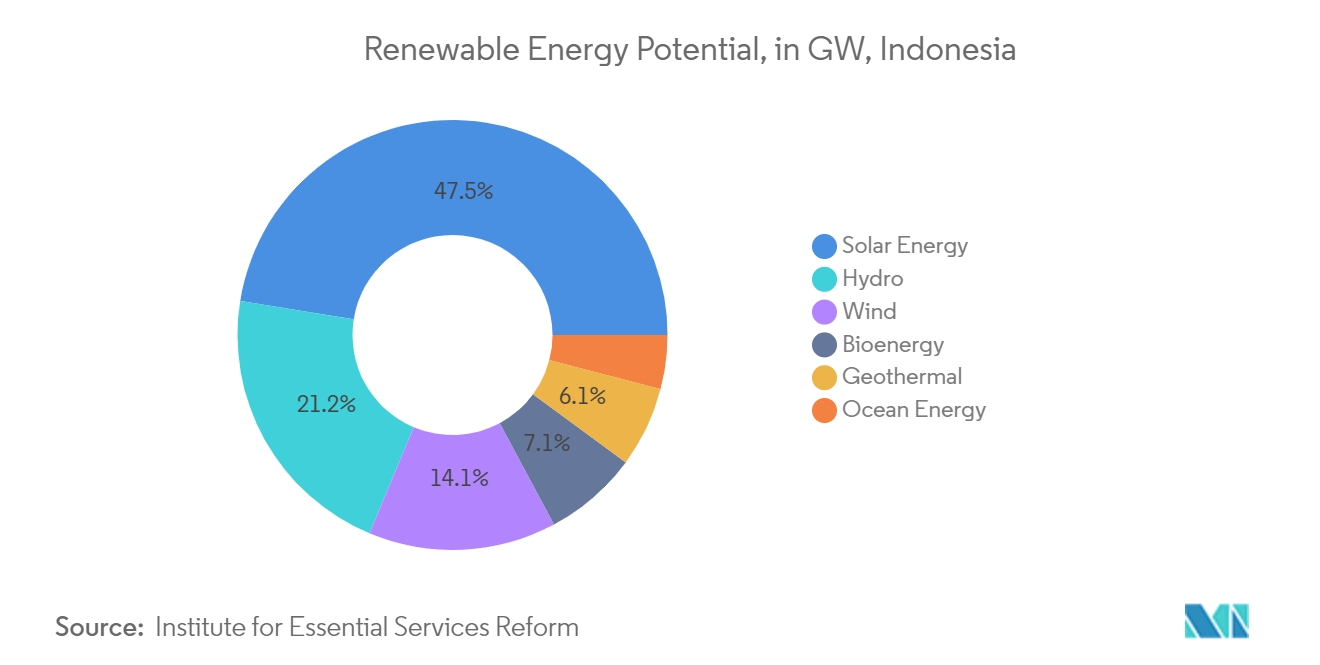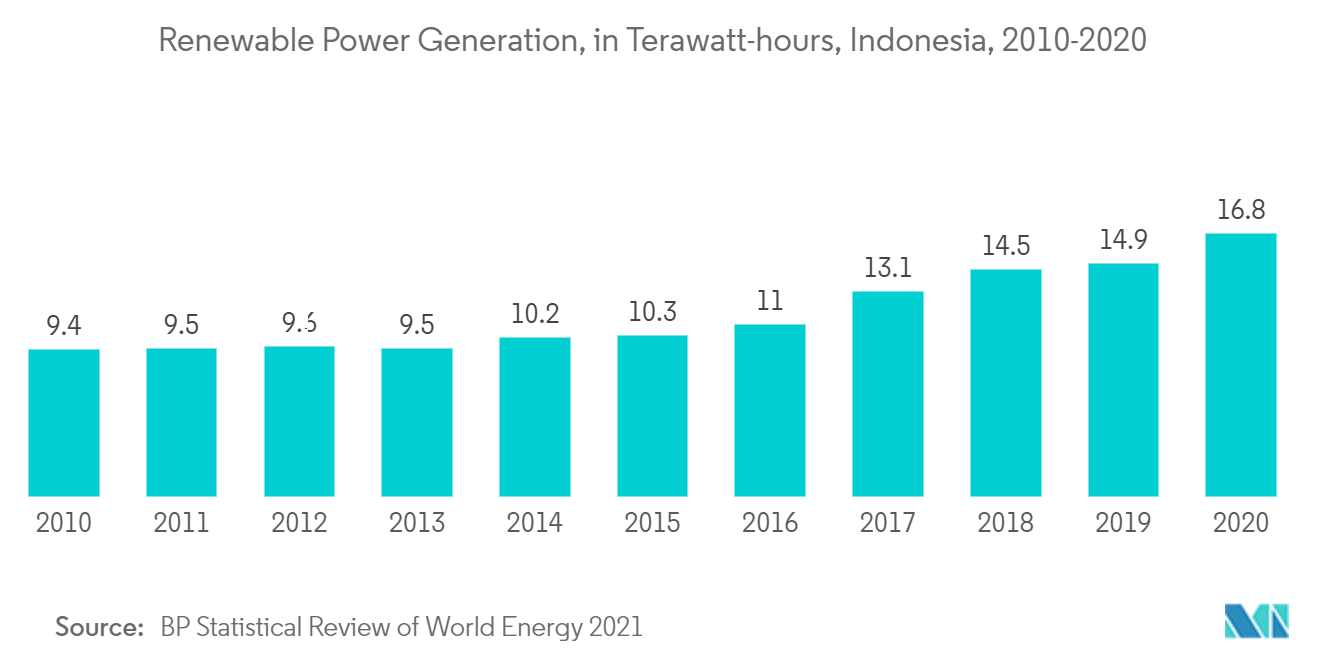Market Trends of Indonesia Renewable Energy CAPEX Industry
This section covers the major market trends shaping the Indonesia Renewable Energy CAPEX Market according to our research experts:
Solar Energy Segment is Expected to Dominate the Market
- Indonesia is one of the leading countries in the South East Asia region to install renewable energy projects. The country possesses a variety of renewable energy resources, including geothermal, hydropower, solar, wind, and biomass. In 2020, the government of Indonesia estimated that Indonesia has potential for renewable energy with a total capacity of more than 440 GW of renewable energy in the country.
- The country has great potential for solar energy projects. according to the government of Indonesia, the country has more than 200 GW of solar energy potential. The current use of solar energy is 0.08% of its potential.
- In the total renewable energy generation potential, solar energy has the highest share of 47.5%, hydropower has a share of 21.2%, similarly, wind energy has a share of 14.1%. Thus, in the future, due to the higher potential, the investment in solar energy projects is likely to increase.
- in 2021, Indonesia has a total installed capacity of solar energy of around d 180 MW, and the government is targeting to add 4.68 GW of solar power capacity by 2030 and is aiming to source 51.6% of its added power capacity from renewable sources.
- In April 2022, Quantum Power Asia Pte Ltd and ib Vogt GmbH are jointly developing a solar park of over 3.5 GW capacity with an investment of USD 5 billion. The project is to be built on Indonesia's Riau Islands and export electricity to Singapore.
- Due to these factors, the solar energy segment is anticipated to grow with a higher CAGR in the forecast period.

Government Favorable Policies are Likely to Drive the Market
- Currently in Indonesia, more than 62% of power is generated from coal and more than 21% is generated from natural gas, and around 15% is from renewable energy sources. in 2010, the total renewable energy generation was 9.4 terawatt-hours and in 2020 it was 16.8 terawatt-hours thus the renewable energy power generation has increased by more than 44% between 2010-2020.
- Due to rising concern over the environment, the government has farmed policies that are expected to boost the investment in renewable energy projects. To felicitate the investment, the government of Indonesia has released the new Electricity Business Plan for 2021-30. With this plan, the government has projected Indonesia's future power capacity and network development plans for the next 10 years. In which the renewable energy generation is exported to be around 16 GW by 2030.
- In 2021, in Indonesia, renewable energy generation accounts for half i.e. 21 GW of total power capacity. Furthermore, the plan is anticipated to achieve the government's objectives of a 23% share of renewable energy in the energy mix by 2025, furthermore, the government is expecting to reduce the total carbon emissions by 29% to 41% by 2030. The government of Indonesia has set an ambitious objective to become net-zero emissions by 2060.
- PT Pertamina is state-owned oil and natural gas corporation based in Jakarta. The company is planing to investment USD 11 billion on the renewable energy sector and this investment in expected to be done in the 2022-2026 .
- Moreover, Indonesia has more than 17,000 islands, 100 reservoirs, and more than 520 natural lakes. The government is planning to install 60 floating PV solar energy projects in these fields.
- These favorable policies and ambitious renewable energy targets set by the government to achieve carbon neutrality by 2060 are anticipated to drive the renewable energy CAPEX market in the forecast period.


